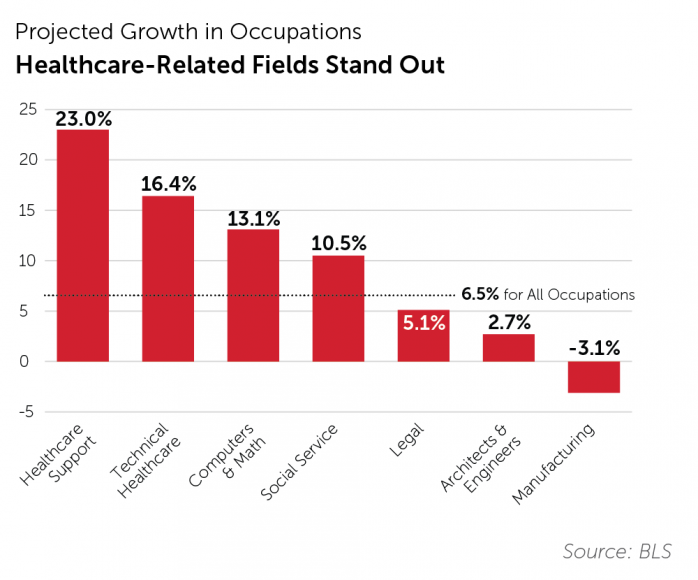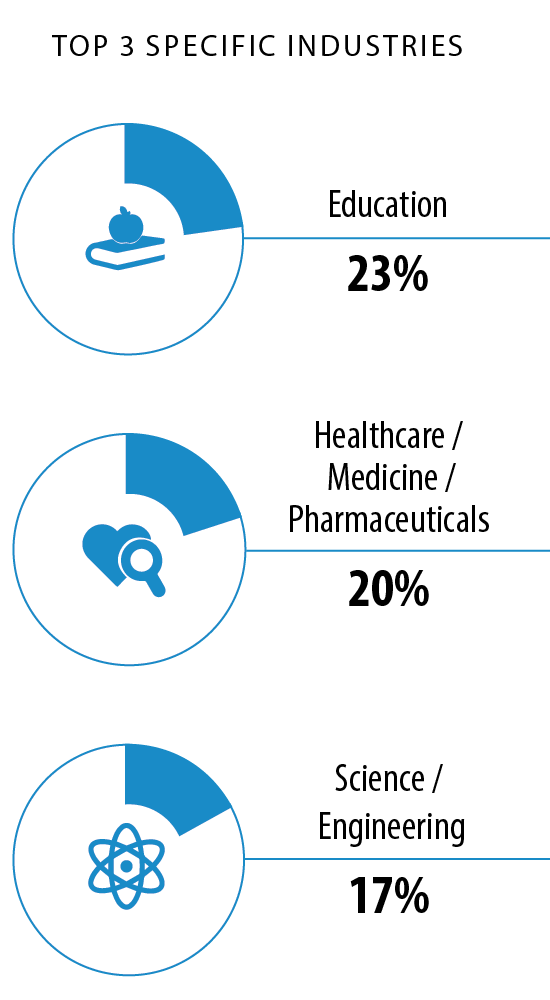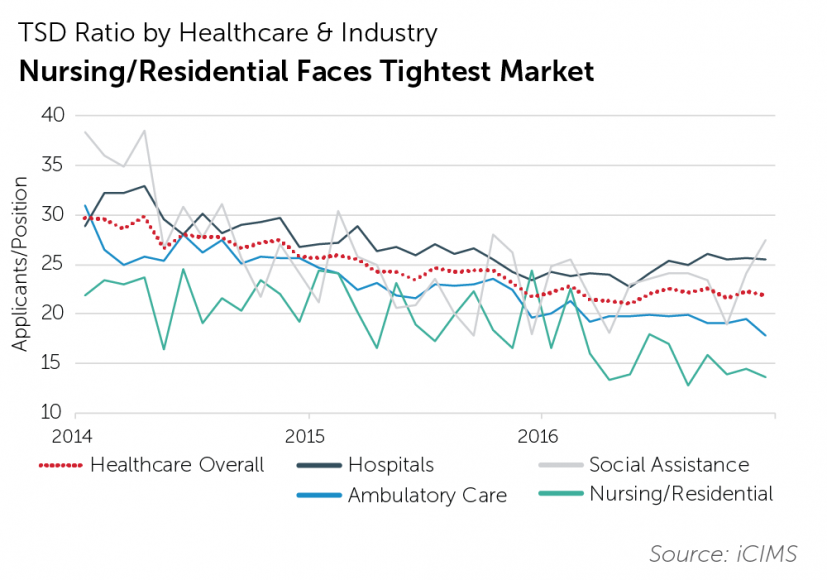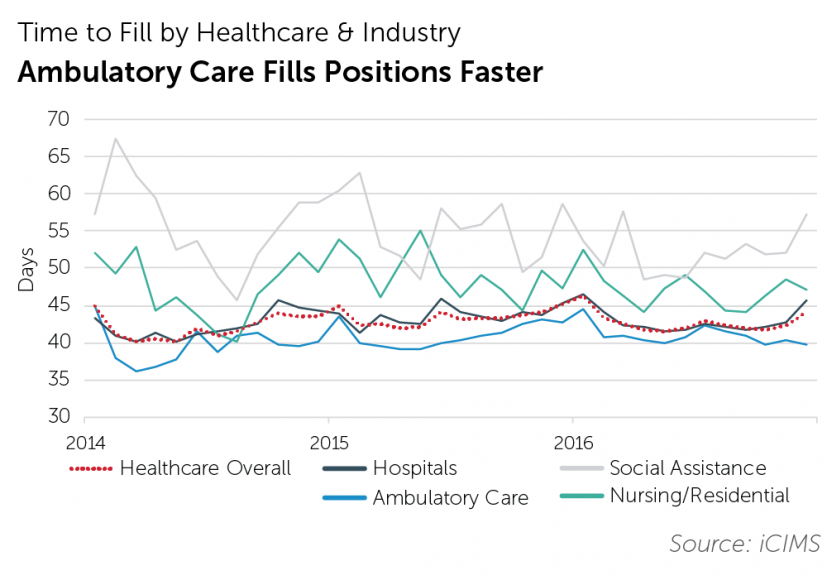Healthcare Under Pressure: Hiring the Next Generation of Workers

Healthcare recruiters don’t have it easy. They must find candidates who are intelligent, diligent, and compassionate professionals, all while trying to fill positions quickly and within budget. It’s not getting any easier: Demand for healthcare services is predicted to swell, driven in part by an aging baby boomer population and governmental attempts to increase access to health insurance.
According to the Pew Research Center, baby boomers will turn 65 at a rate of 10,000 per day for the next 12 years. This is one reason the U.S. Bureau of Labor Statistics forecasts that healthcare employment will grow at a rate of 10.5 to 23 percent in the ten-year period between 2014 and 2024, compared to only 6.5 percent for all occupations. Even if new healthcare legislation eventually ends up reducing or shifting demand for some services, these long-term demographic trends will remain intact.
Healthcare Occupation Group Projected Growth

The need for more workers in this industry has become conventional wisdom at this point, but how will employers face the hiring challenges these trends will cause?
Attracting millennial talent is key, since their generation will compromise three-fourths of the workforce by 2025. Fortunately, a 2016 iCIMS survey of college seniors indicated that healthcare is among the most attractive industries for new graduates to work in: 20 percent said they would want to work in a health-related industry after graduation. Even so, it is not clear if the expected number of applicants will satisfy the growing demand for workers in this industry. One major issue: There are bottlenecks in training for certain healthcare occupations, with many schools and hospitals facing the prospect of a large proportion of their senior faculty and experienced professional mentors retiring in the coming years.

According to iCIMS’s recent report on hiring in healthcare, hospitals may have an edge in this competition, as job seekers consider them to be attractive places to work. Over the last three years, hospitals have received a higher and more consistent number of applicants for each open position than other types of employers in the healthcare industry, such as ambulatory care and nursing facilities.


Case Study: Dana-Farber Cancer Institute
The Dana-Farber Cancer Institute, a hospital (and iCIMS customer), has seen evidence of these advantages firsthand. The organization’s strong consumer brand gives it a head start in building an employer brand to attract candidates. In many cases, candidates come to Dana-Farber, allowing it to reduce its expenditures on recruitment advertising.
Still, Dana-Farber devotes significant resources to refining its talent acquisition strategy. Since the organization hires a lot from within – transferring and promoting from within the same department – it has to make each outside hire count. It cultivates students and entry-level job seekers by hosting a comprehensive workforce development student training program. This includes a summer jobs programs, school-year internships, and job-shadowing opportunities for Boston youth. The goal of these programs is to develop and facilitate career and college readiness for high school and college students, as well as adults who are changing careers.
How Can Healthcare Employers Hire and Retain Top Talent?
Even if you aren’t fortunate enough to work at an elite, nationally recognized healthcare organization, here are three tips any firm can use to boost its employment brand and attract more applicants:
- Promote professional and personal development opportunities on your career website.
- Partner with local educational institutions to cultivate local talent pipelines. This is possible even if your employer doesn’t have a widely recognized brand and doesn’t have a large PR budget.
- Post stories about your company’s and employees’ success on the company website and social media pages, keeping in mind that job seekers are attracted to the healthcare industry by the opportunity to be part of something meaningful.
To learn more about the hiring trends within the healthcare industry, read the full report on iCIMS Hiring Insights.
Josh Wright is chief economist at iCIMS.

